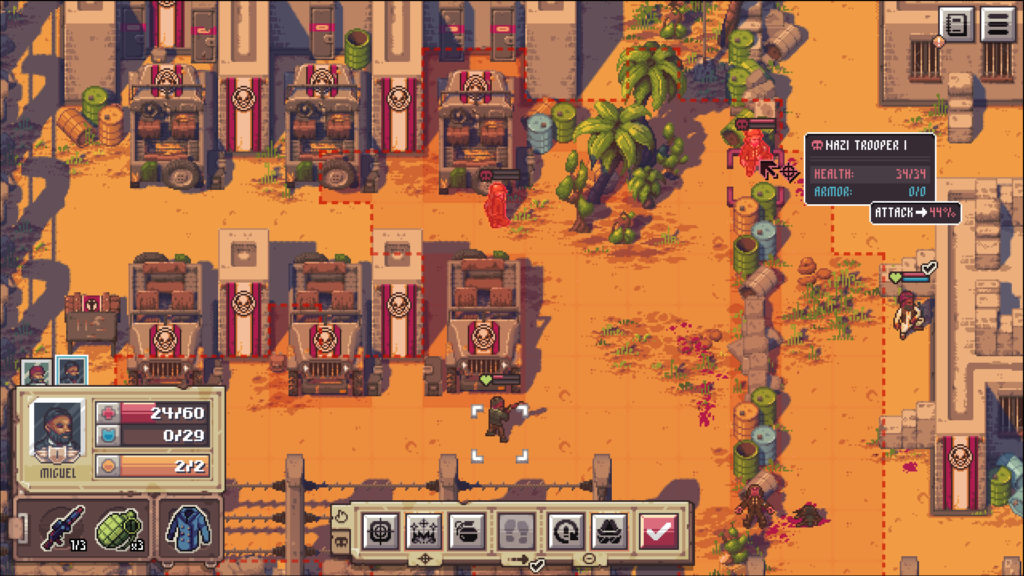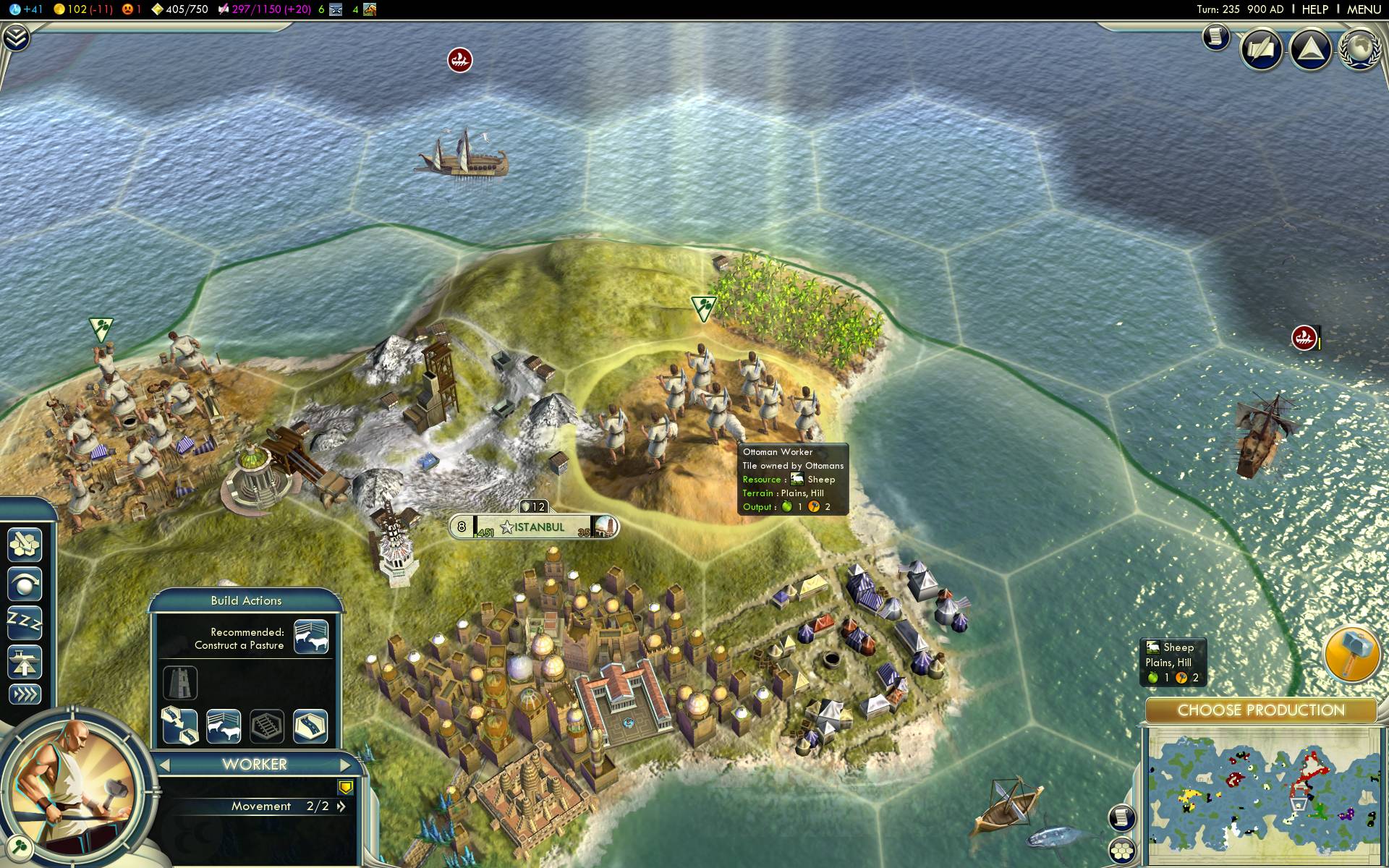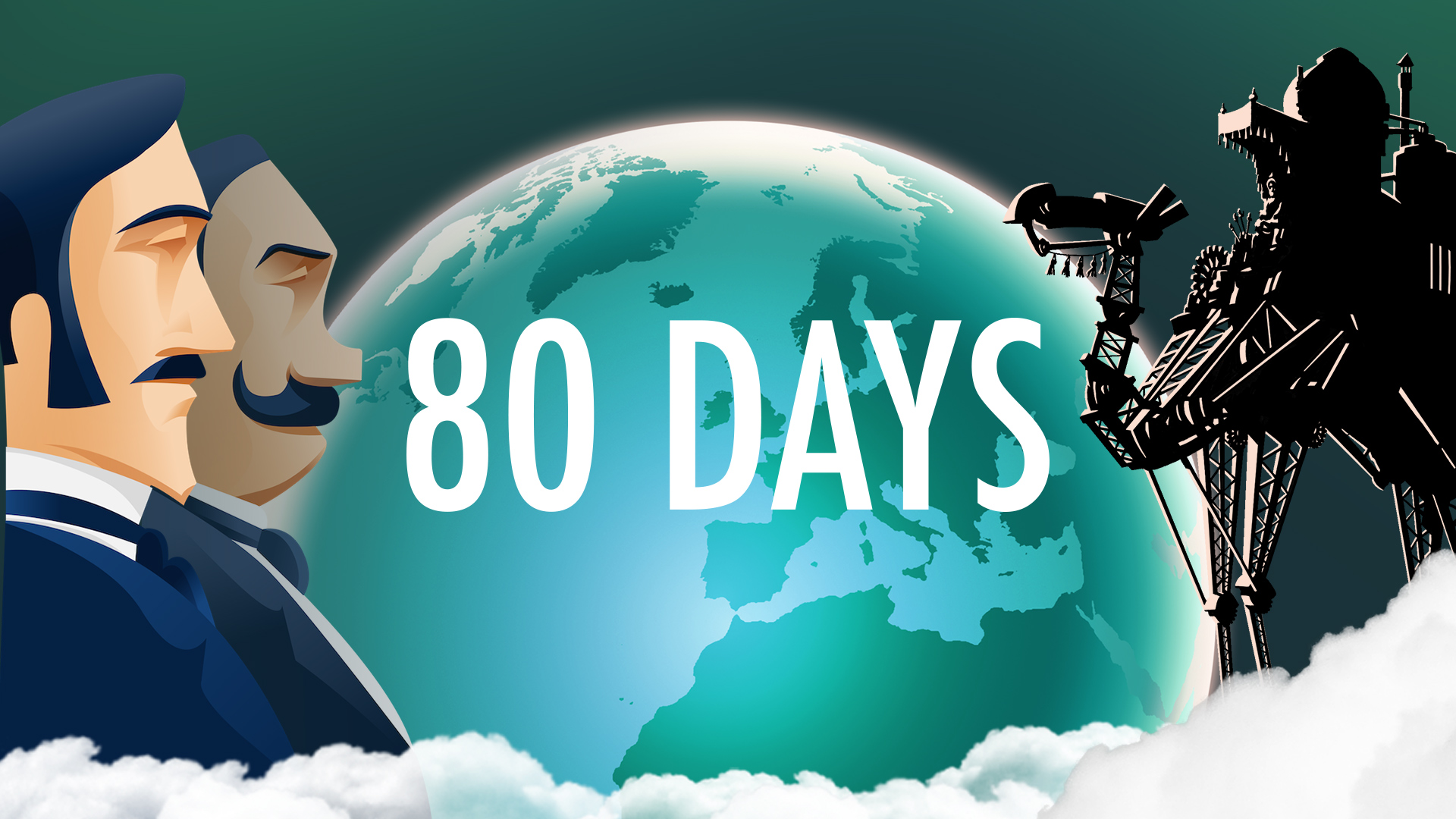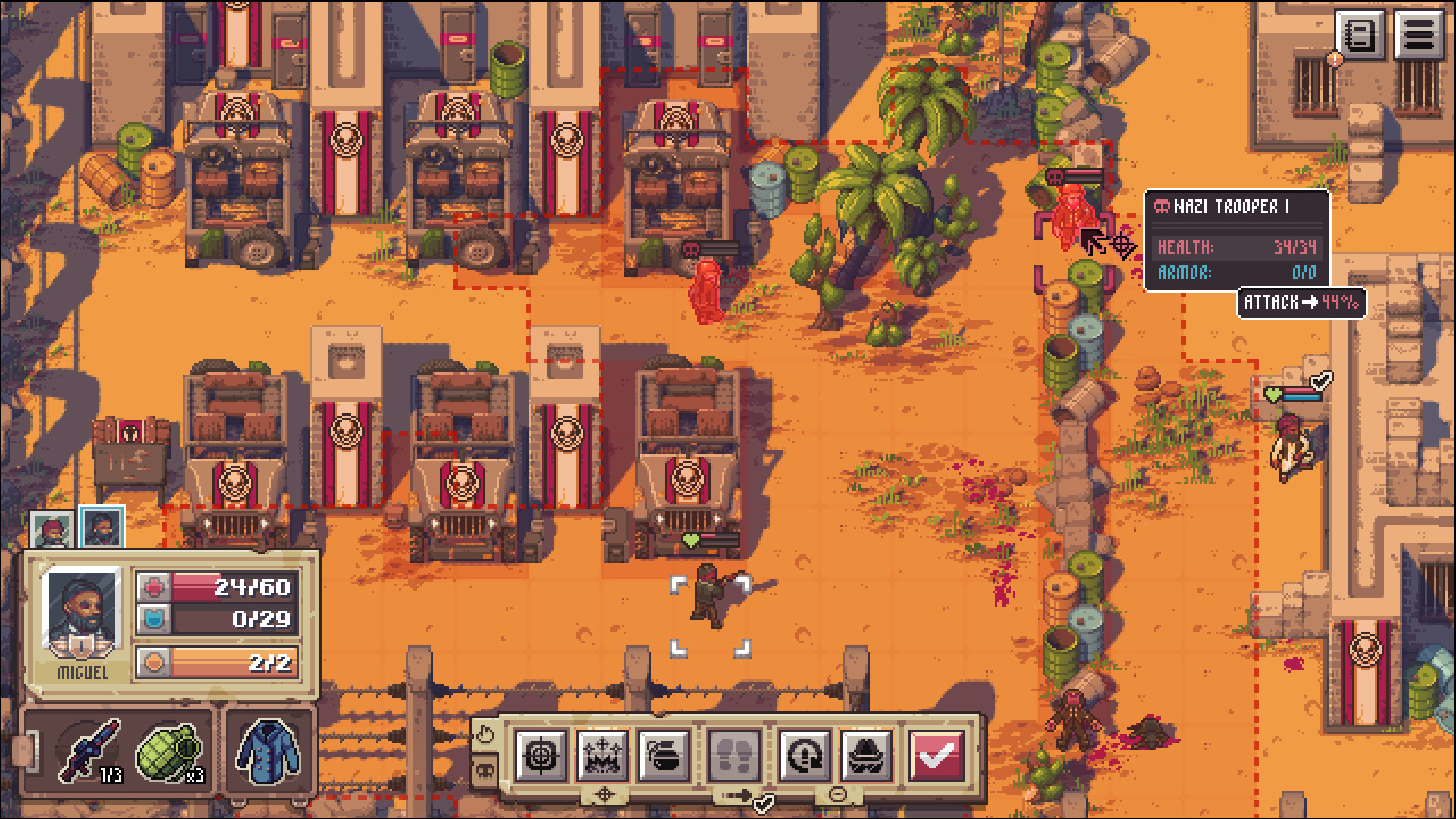
Chasing the Anti-Colonial Video Game
If you’ve ever played Sid Meier’s Civilization, you’ve had a moment where you became a colonizer. I never set out to be a conquistador in game (and find it more than odd that it’s celebrated as one of Spain’s foundational histories), but there inevitably comes a time when there’s a piece of land that I need that some other player has. It beckons to me, especially when its resources aren’t being fully utilized, or the city in question doesn’t have basic amenities like a granary. “I can run this so much more efficiently!” I think to myself as I get ready to spread democracy or bring enlightenment, or, in more self-aware moments, plunder somebody else’s resources. The game’s design invites those kinds of decisions, and it doesn’t lead the player to question them.
It’s not just mechanics and design that rewards certain kinds of imperial impulses. Games frequently depict indigenous peoples as primitive or backwards. Even if they don’t make them the villain, they’re frequently passive objects: people in need of rescuing, or if they’re lucky, some narrative exposition that the heroes listen to before going off to save the day. If players are given a chance to side with indigenous peoples, it usually takes place under very specific conditions—and more often than not, they’re engaging in the same kinds of power fantasies as the colonizer. To take it back to Civilization, in earlier versions, the Iroquois could become a global superpower, but all that that would do is reverse the imperial fantasy: they still establish the same kinds of states modeled on Western Europe and North America and still behave in more or less the same way.
Why does this matter, you might ask? Video games are actually a critical way to understand how imperial fantasies play out. During the nineteenth century, advocates of empire framed colonial conquest through adventure fiction like King Solomon’s Mines. Lost treasure, discovering unknown or uninhabited spaces, saving “backwards” people, monsters, and a whole host of other familiar themes are present in Victorian adventure fiction. Adventure and morality plays went hand-in-hand. Unsurprisingly, that fiction presented plenty of racist tropes about indigenous people That same fiction, itself entertaining, also helped to justify imperial actions and all of the crimes that went with them. Today, many of those same messages are filtered down through video games, whether as more war pornography, or more subtly, through adventure and fantasy games.
Is it possible to make an anti-imperial and anti-colonial video game? With so many games based around resource acquisition or telling those same kinds of adventure fantasies, it’s difficult. But that also doesn’t necessarily mean that we can simply write off video games. If anything, they’re too important to simply be abandoned as creative art forms. I spoke to three different developers about how they try and create games from an anti-imperial and anti-colonial perspective. Some of the questions deal with ideas of representation or deconstructing typical video game hero narratives. Others were more radical in nature, trying to understand how to subvert some of the imperial impulse so present in video game mechanics. One developer questioned whether western developers can meaningfully tell these stories.
80 Days
For the uninitiated, 80 Days is an adventure-game set in an alternate steampunk version of the nineteenth century. You get to play the role of Passepartout accompanying Phineas Fogg on a trip around the world, trying to win a bet that it can be done in eighty days or less. Automatons and airships have spread across the globe, enabling rapid travel, but they didn’t begin in Europe, and the balance of power is much more evenly divided. From a historical perspective, it’s situated right at the height of Europe’s scramble for empire, but the world looks very different from our experience.
Flipping the script of European global domination is one thing, and the game does get at that. Some areas, such as India, are under British rule, but elsewhere, groups that had been colonized remain independent. In game, the Zulu Federation is aggressively and successfully defending itself against British incursion and stopping much of the Scramble for Africa. Iran, instead of being sandwiched between the competing ambitions of Russia and Great Britain, is one of the centers of automaton production. And in Canada, many First Nations groups have literally taken to the sky in a floating city to escape the Canadian government.
But beyond flipping the historical script, the game also undermines some of the original’s colonial visions. At one point in Around the World in Eighty Days, Fogg and Passepartout save a woman from suttee in India, a practice in which widows committed suicide on a husband’s funeral pyre. The practice was commonly invoked as justification for the British presence in India, part of a civilizing mission. Even the system of trains and steamers that the two use to travel the world were products of a colonial system designed to extract resources and move troops. Those moments don’t exist in the same way in 80 Days: there are no apologia for imperialism, and the “progress” that we see isn’t necessarily European.
Jon Ingold laid out some of the difficulties in writing an anti-colonial game with me. “The thing that strikes me about games is that they’re centered around a protagonist, usually an outsider, who goes into a context with more power and awareness than anyone within that context…the force of civilization with the power of judgement and life or death over whoever they might encounter. This whole cowboy aesthetic which sits at the heart of 99% of all games can’t really present itself as non-colonial. And while a game can present an indigenous culture better, or worse, it’s another level of design – let alone storytelling, worldbuilding – to allow a culture to exist without being contingent and material to what the protagonist is doing. To put it simple, whatever culture you visit in a game is a resource to be exploited for profit or pleasure. It can be a well-researched, nuanced cultural depiction, but you still take what you want and then leave.”
How did they try to solve that in 80 Days, beyond moving past an imperialistic and colonial script? “The biggest design trick 80 Days does is to make the wider world largely disinterested in what the protagonist might or might not do, and we can get away with that because the protagonist’s goals are very simple – usually, just to hear of a new route onwards – and they can be achieved quite incidentally… We can go anywhere, meet anyone, and talk about anything – from revolutions to itchy knees – and make it meaningful, both to the game and the story. And it works regardless of what the culture you encounter is like – some are technologically marvelous; some are quite ordinary; some are rustic. But in each the player can have meaningful encounters and interesting discoveries. One culture is not more “valuable” than another by virtue of its resources or its technology. If the game were about making money rather than finding new paths, that would be impossible.”
Pathway
Adventure fiction set in the 1930s is grade-A territory for video games and fiction. I grew up on Tintin and Indiana Jones that left with me a lingering love of the idea of adventure and the exotic. In many of them, you even get to fight actual fascists! Unfortunately, those types of stories tend to be just as problematic (I’m thinking of Temple of Doom and Tintin in the Congo). Indigenous peoples are primitive and frequently guarding something the hero has to steal, or worshipping evil gods. If they’re not an obstacle, they’re passive victims of another outside, waiting for that “cowboy hero” to come in and save the day.
Pathway is an homage to all of those stories, and Stephan Naujoks makes clear that they did not intend for it to be a subversive deconstruction of the genre: “For us, Pathway was more about conjuring up childhood memories and entertaining players with exciting adventure episodes.” Set in the 1930s, players race to stop Nazis or death cultists from finding lost artifacts and using them for their own nefarious purposes. It exists within that same colonial milieu: most of the locations that players visit are places nominally under British or French rule, though colonial authorities are mostly invisible in the game.
Naturally, this runs the risk of revisiting some of those colonial tropes, and Naujoks feels that much of the gaming world is unready for these conversations. Gaming, despite (or perhaps because of) its growing diversity is in the midst of turmoil. “Even though this biotope has diversified over the past twenty years, the grossly overreacting against well-meaning critics like Anita Sarkeesian or the aggressive excitement surrounding the Gamergate pseudo-scandal show that these boys are waging a desperate defense against any infiltration by any outside influences. A dominant part of the players seems to follow reactionary impulses. Apart from that, I find the narrowness of their cultural horizons depressing: sometimes I get the impression that there isn’t much besides South Park, Harry Potter or memes.”
Naujoks also questioned whether better writing would solve some of these issues: “Is this really honest considering the social inequalities that still exist between north and south – or is it just pure feel-good rhetoric with which otherwise politically inert players can calm their guilty consciences and demonstrate convenient pseudo-engagement from behind their screens? Isn’t it, in a way, just a new version of the White Man’s Burden when Western developers feel obliged to retrospectively restore historical justice at a symbolic level?” The solution in his mind has to come from developers in the Global South and indigenous people telling their own stories, and in his words, moving beyond “Hollywood or Nordic-Celtic mythology.”
Santo Aveiro-Ojeda
Santo Aveiro-Ojeda is a game designer whose games explicitly deal with indigeneity, colonialism, and imperialism. Santo has Guarani ancestry, and themes from Guarani beliefs are also present in their games. When I asked them how colonialism has traditionally been represented in gaming, their response was unequivocal. “Often in games imperialism and colonialism is used as a tool for the player to wield and channel their power fantasies… Theft and murder is presented as something sensible and acceptable, given that games often give players no choice in the matter.”
The representation of indigenous peoples in gaming is little better in their opinion. “Overall, Indigenous representation is severely lacking, and if there is Indigenous representation in a game, it often falls back to what settlers think an Indigenous person is (magical, antiquated, etc). This again goes in hand with how settlers think of Indigenous peoples outside games—often forgotten or thought about in the past tense.” Stories about indigenous groups often emphasize their “disappearance” after the arrival of Europeans, simultaneously erasing the violence with which they were displaced and their existence in the present tense.
One of Santo’s solutions is similar in many ways to Naujoks’: support for indigenous game designers, who can then challenge some of the imperialistic ideas present in many video games. Agency is in some ways at the center of that, and Santo’s game eliminate or subvert the kinds of agency most players expect in video games. While players can make decisions, “they are not completely isolated choices that they can make without consequence.” Moreover, the focus is on NPCs, not the player, so players more often than not are providing agency to indigenous people instead of to protagonists, flipping the treatment of indigenous peoples as passive objects in many video games.
One of Santo’s games, 1870: Cyberpunk Forever, takes this on by imagining a cyberpunk reality rooted in indigenous futurism. Santo defines it thusly: “Indigenous Futurisms isn’t like science-fiction, but is about reframing Indigeneity to visualize an Indigenous future as influenced by past and present. This may sometimes include genres like sci-fi and Cyberpunk.” The purpose is to imagine indigenous futures that have managed to break free of the oppression of colonialism and to reimagine what societies can look like if they’re not built atop exploitation and white supremacy.
Moreover, the game undermines the process I mentioned in Civilization, which is the assumption of exactly one path of “development.” Questioning the inevitability of our mode of living also questions its desirability implicitly, and it’s in this realm that these kinds of games can be truly revolutionary. If you’re expecting typical game design and the usual pleasure center rewards you get from gaming, 1870 might not be as satisfying as you might expect. You have to approach the game’s characters on their terms, not on yours, and the answers that you’re given are not neat.
Closing Thoughts
What then is the future of anti-imperialism in gaming? Gamers will protest if there can be no easy escapism in gaming, and it’s not unreasonable to expect gaming to be a recreational activity. That doesn’t mean however that games need to be oriented around toxic themes just because they’re familiar or because they’ve been made palatable. Increasing representation for developers outside of this mold and with an awareness of how narrative decisions can normalize imperialist themes can enrich games with more conventional play-styles, too. This is how one would get at a pulp fiction adventure game that truly deconstructs the genre and tells it from the perspective of the colonized, maybe letting them have the action, but to their own ends and not merely to replicate the colonizer.










4 thoughts on “Chasing the Anti-Colonial Video Game”